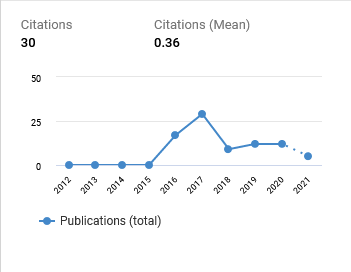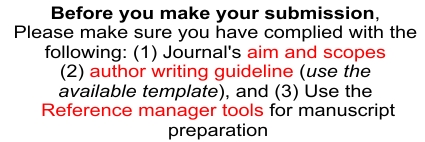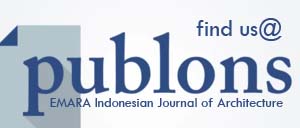Prinsip Desain Geometri Arsitektur Tadao Ando
DOI:
https://doi.org/10.29080/emara.v3i2.152Keywords:
angle wall, direction wall, geometry, monistic architecture, opening, pluralistic architecture, Tadao AndoAbstract
Geometry has shown that the architecture was an expression of man and a basic principle that were always presented on an architectural work. The research was conducted through two steps with the first step was to identified the Tadao Ando’s geometry design principle through a content analysis approach. Based on the textual review, Tadao Ando's geometry design principle was tend to select the simple geometric forms as the embodiment of the building shapes. An user spatial experiences were created through inter space relationships and interactions with the surrounding environment through the geometry and shape processing and became the central to his architectural work creation. In other words, pure geometry concept was the instrument to presented all of those. The second step was to compared Tadao Ando's geometry design principles in the monistic architecture to the pluralistic architecture catagories using a precedent analysis approach. The comparisons toward the geometrical principles were more complex and quite varied geometric shapes in pluralistic architecture while simple geometric shapes can be found in the monistic architecture,as well as interlinked circular paths in pluralistic architecture which shaped by the ‘direction wall’ rather than a simple circulation path in the monistic architecture, and the wall-formed angle was a multiple of 15° in monistic architecture but varying angles in the pluralistic architecture.
Downloads
References
Ando, T. (2008). Tadao Ando 3 Inside Japan. Japan: Nobuyuki Endo.
Betigeri, A. (2011). The Jungle Look. Monocle Magazine, 5(41), 128–130. Retrieved from https://monocle.com/gallery/magazine/41/the-jungle-look/7/
Chung, M. K. (n.d.). The Churches of Tadao Ando.
Clark, R. H., & Pause, M. (2005). Precedents in Architecture: Analytic Diagrams, Formative Ideas, and Partis. New Jersey: John Wiley & Sons.
Co, F. D. (1997). Tadao Ando: Complete Works. Phaidon Press.
Ekomadyo, A. S. (2006). Prospek Penerapan Metode Analisis Isi (Content Analysis) dalam Penelitian Media Arsitektur. Jurnal Ilmu Pengetahuan Teknologi dan Seni, 10(2), 51-57
Farhady, M., & Nam, J. (2011). Thresholds in the Pluralistic Architecture of Tadao Ando. Journal of Asian Architecture and Building Engineering, 10(1), 31–36. https://doi.org/10.3130/jaabe.10.31
Furuyama, M. (1996). Tadao Ando. Basel, Boston, Berlin: Birkhauser Verlag.
Gill, S. S. (2010). A Study of The Characteristics of Natural light in Selected Buildings Designed by Le Corbusier, Louis I. Kahn and Tadao Ando (Doctoral dissertation, Texas A & M University).
Hien, P. T. (1998). Abstraction and Transcendence: Nature, Shintai, and Geometry in the Architecture of Tadao Ando. Dissertation.com. Retrieved from http://www.dissertation.com/books/158112029X
Jodido, P. (2007). Ando: Complete Works. Berlin: Taschen GmbH.
Putro, S. G. (2010). A Box That Provokes : Eksplorasi Sekuens Ruang Berdasarkan Gagasan Arsitektur Tadao Ando. Jurnal Teori Dan Desain Arsitektur, 4(1), 23–34.
Shirazi, M. (2012). An Investigation on Tadao Ando’s Phenomenological Reflections. Armanshahr Architecture and Urban Development, 4(8), 21–31.

Downloads
Published
How to Cite
Issue
Section
Categories
License
Copyright (c) 2017 Soraya Masthura Hassan

This work is licensed under a Creative Commons Attribution-ShareAlike 4.0 International License.
- Authors retain copyright and grant the journal right of first publication with the work simultaneously licensed under a Creative Commons Attribution ShareAlike License that allows others to share the work with an acknowledgment of the work's authorship and initial publication in this journal.
- Authors are able to enter into separate, additional contractual arrangements for the non-exclusive distribution of the journal's published version of the work (e.g., post it to an institutional repository or publish it in a book), with an acknowledgment of its initial publication in this journal.
- Authors are permitted and encouraged to post their work online (e.g., in institutional repositories, pre-print sites, or on their website) prior to and during the submission process, as it can lead to productive exchanges, as well as earlier and greater dissemination of published work.
































